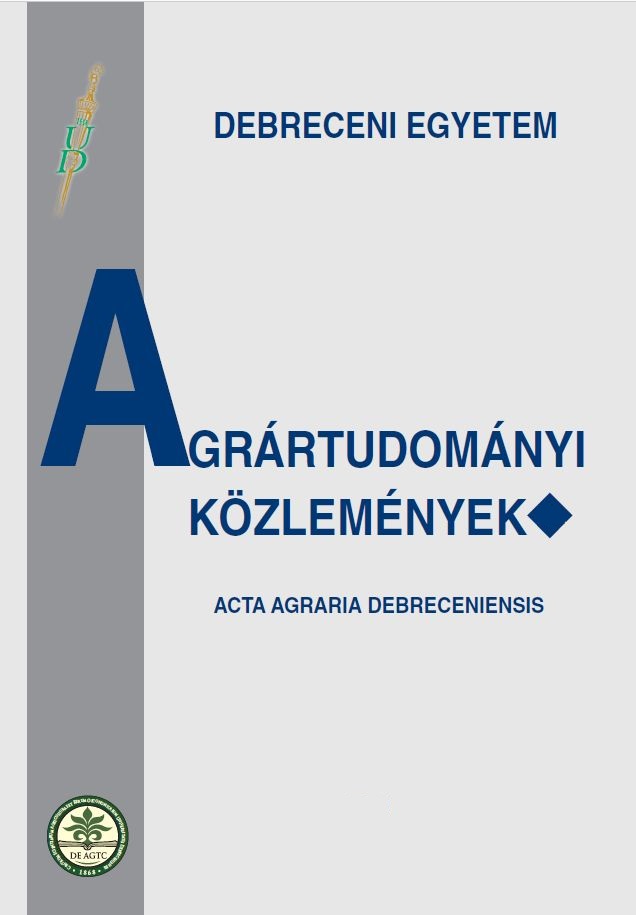Assessment of Environmental Susceptibility/Vulnerability of Soils
Author
View
Keywords
How To Cite
Abstract
Soils represent a considerable part of the natural resources of Hungary. Consequently, rational land use and proper soil management – to guarantee normal soil functions – are important elements of sustainable (agricultural) development, having special importance both in the national economy and in environment protection.
The main soil functions in the biosphere are as follows: conditionally renewable natural resource; reactor, transformer and integrator of the combined influences of other natural resources (solar radiation, atmosphere, surface and subsurface waters, biological resources), place of „sphere-interactions”; medium for biomass production, primary food-source of the biosphere; storage of heat, water and plant nutrients; natural filter and detoxication system, which may prevent the deeper geological formations and the subsurface waters from various pollutants; high capacity buffer medium, which may prevent or moderate the unfavourable consequences of various environmental stresses; significant gene-reservoir, an important element of biodiversity.
Society utilizes these functions in different ways (rate, method, efficiency) throughout history, depending on the given natural conditions and socio-economic circumstances. In many cases the character of the particular functions was not properly taken into consideration during the utilization of soil resources, and the misguided management resulted in their over-exploitation, decreasing efficiency of one or more soil functions, and – over a certain limit – serious environmental deterioration.
Soil resources are threatened by the following environmental stresses:
– soil degradation processes;
– extreme moisture regime;
– nutrient stresses (deficiency or toxicity);
– environmental pollution.
Environmental stresses caused by natural factors or human activities represent an increasing ecological threat to the biosphere, as well as a socio-economic risk for sustainable development, including rational land use and soil management.
The stresses are caused by the integrated impacts of various soil properties, which are the results of soil processes (mass and energy regimes, abiotic and biotic transport and transformation and their interactions) under the combined influences of soil forming factors. Consequently, the control of soil processes is a great challenge and the main task of soil science and soil management in sustainable development.
The efficient control of these processes necessitates the following consecutive steps:
• registration of facts and consequences (information on land and soil characteristics, land use, cropping pattern, applied agrotechnics, yields, with their spatial and temporal variability);
• evaluation of potential reasons (definition and quantification of soil processes, analysis of influencing factors and their mechanisms);
• assessment of the theoretical, real, rational and economic possibilities for the control of soil processes (including their risk-assessment and impact analysis);
• elaboration of efficient technologies for the „best” control alternatives (best management practice).
Scientifically based planning and implementation of sustainable land use and rational soil management to ensure desirable soil functions, without any undesirable environmental side-effects, require adequate soil information. In the last years such data were organized into a computer-based GIS soil database in Hungary, giving opportunities for the quantification, analysis, modelling and forecasting of the studied environmental stresses and for the efficient and scientifically based prevention, elimination or reduction of environmental stresses and their unfavourable ecological and economical consequences.
Special attention was paid to the assessment of various soil degradation processes, as: (1) soil erosion by water or wind; (2) soil acidification; (3) salinization and/or alkalization; (4) physical degradation (structure destruction, compaction); (5) extreme moisture regime: drought sensitivity and waterlogging hazard; (6) biological degradation; (7) unfavourable changes in the plant nutrient regime; (8) decrease of natural buffering capacity, (9) soil (and water) pollution.
The actions against undesirable environmental stresses and their unfavourable consequences are important elements of sustainable, efficient, economically viable, socially acceptable and environmentally sound crop production and agricultural development. These are joint tasks of the state, decision makers on various levels, the land owners, the land users and – to a certain extent – of each member of the society.

 https://doi.org/10.34101/actaagrar/9/3563
https://doi.org/10.34101/actaagrar/9/3563